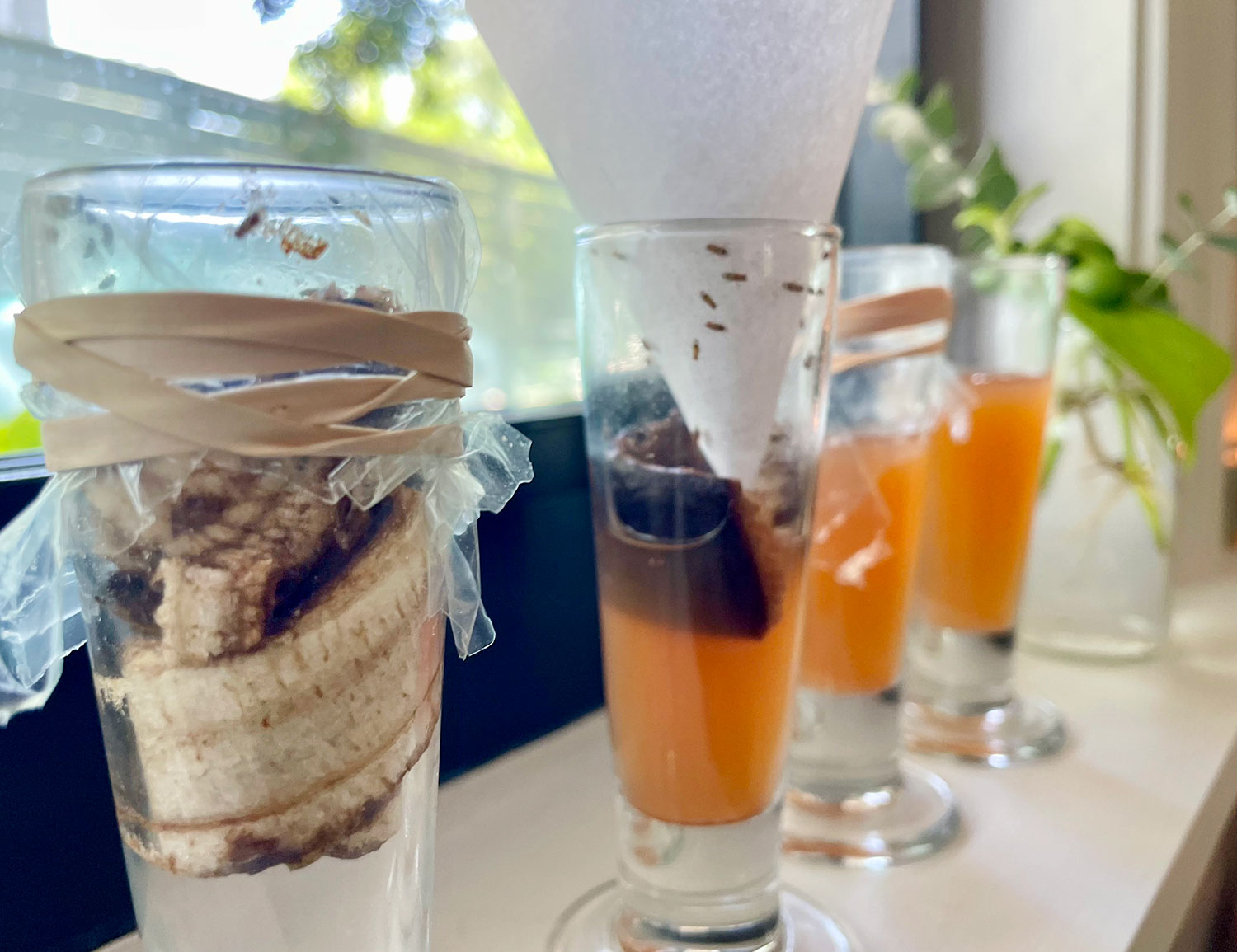
Fruit flies can be a pesky problem in any kitchen, especially when warmer months roll around or produce is left out for too long. These tiny insects are not only annoying, but they can also multiply quickly if left unchecked. Fortunately, there are several easy ways to tackle a fruit fly infestation without needing harsh chemicals. Here’s a complete guide on how to get rid of fruit flies effectively, so you can keep your kitchen clean and fly-free.
What Are Fruit Flies and Why Do They Appear?

Fruit flies, scientifically known as Drosophila melanogaster, are small insects that are attracted to ripe or fermenting fruit and vegetables. They’re also drawn to sugary liquids, like juice, soda, and even wine. These flies lay their eggs on organic materials, where their larvae can feed, making moist surfaces like drains, overripe fruits, and garbage cans ideal breeding grounds.
How to Get Rid of Fruit Flies: 7 Proven Methods
1. Apple Cider Vinegar and Dish Soap Trap
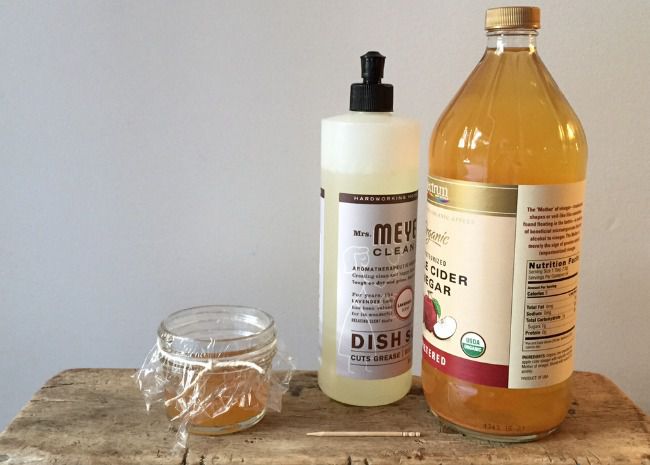
This method is highly effective and easy to set up:
• What You’ll Need: Apple cider vinegar, dish soap, a small bowl, and plastic wrap.
• Instructions: Pour about half an inch of apple cider vinegar into a bowl and add a few drops of dish soap. Cover the bowl with plastic wrap and poke small holes in it.
• Why It Works: The vinegar attracts the fruit flies, while the dish soap breaks the liquid’s surface tension, causing the flies to sink and drown.
2. Red Wine Trap
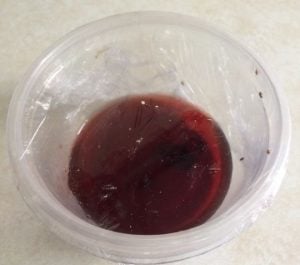
This trick works similarly to the apple cider vinegar trap:
• What You’ll Need: A bit of red wine, dish soap, a small bowl, and plastic wrap.
• Instructions: Pour a small amount of wine into a bowl and add a few drops of dish soap. Cover with plastic wrap and poke small holes.
• Why It Works: The wine’s aroma lures the flies, and the soap traps them in the liquid.
3. Paper Cone and Fruit Trap
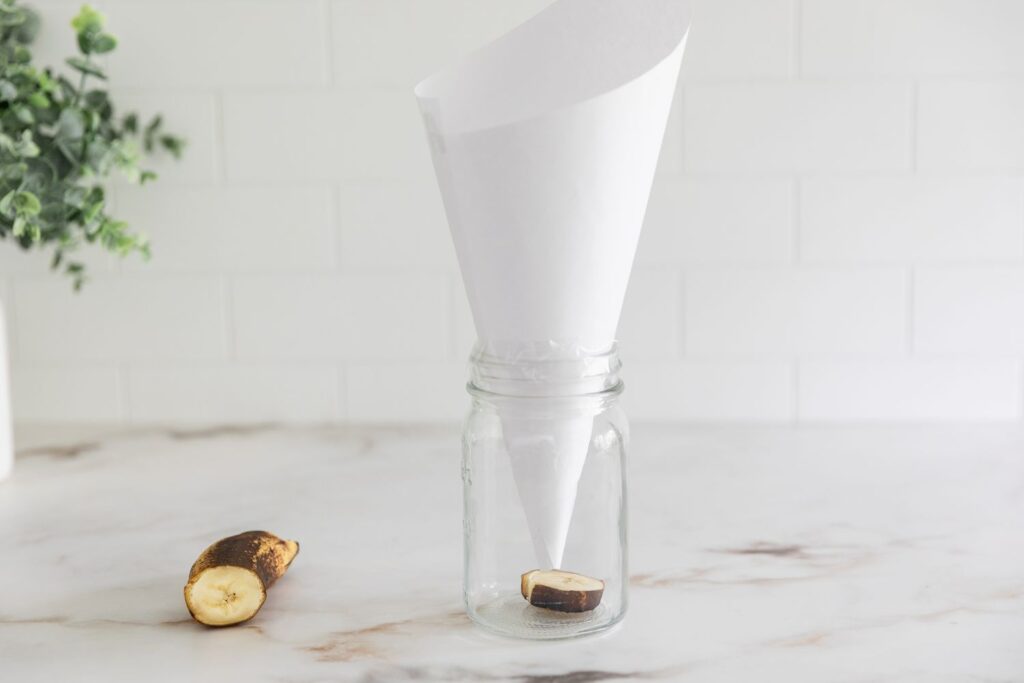
A classic, DIY trap that doesn’t require plastic wrap:
• What You’ll Need: A jar, a piece of ripe fruit (like a banana peel), and paper.
• Instructions: Place the fruit in the jar and roll a piece of paper into a cone shape, leaving a small opening at the bottom. Insert the cone into the jar with the narrow end down.
• Why It Works: The fruit lures the flies, which can get into the jar through the cone but have a hard time finding their way back out.
4. Milk, Sugar, and Pepper Trap
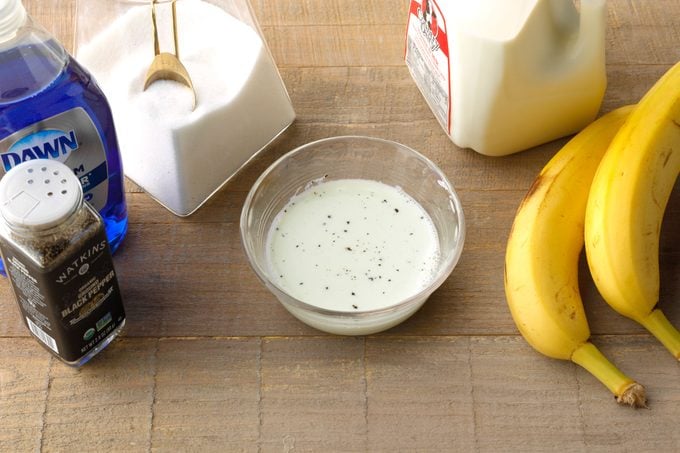
This old-fashioned method is effective at attracting and trapping fruit flies:
• What You’ll Need: ½ cup of milk (approximately 120ml), 2 tablespoons of sugar, a pinch of black pepper, and a bowl.
• Instructions: Mix the ingredients in the bowl and leave it out on your counter.
• Why It Works: Fruit flies are drawn to the sweet and milky mixture, and they end up drowning in the liquid.
5. Regular Cleaning and Disposal

The best prevention method is to remove the fruit flies’ breeding sources:
• Instructions: Throw away overripe or rotting fruits and vegetables. Clean countertops, wipe up spills, and take out the trash regularly.
• Why It Works: By eliminating the food sources and breeding sites, you reduce the chances of future infestations.
6. Boiling Water and Vinegar Drain Flush

Fruit flies can breed in drains, so cleaning them out can be essential:
• What You’ll Need: Vinegar and boiling water.
• Instructions: Pour half a cup of vinegar down the drain, followed by boiling water. Repeat daily until you see fewer flies.
• Why It Works: The heat and acidity from the vinegar kill fruit fly larvae hiding in the drain.
7. Use Essential Oils as Repellents
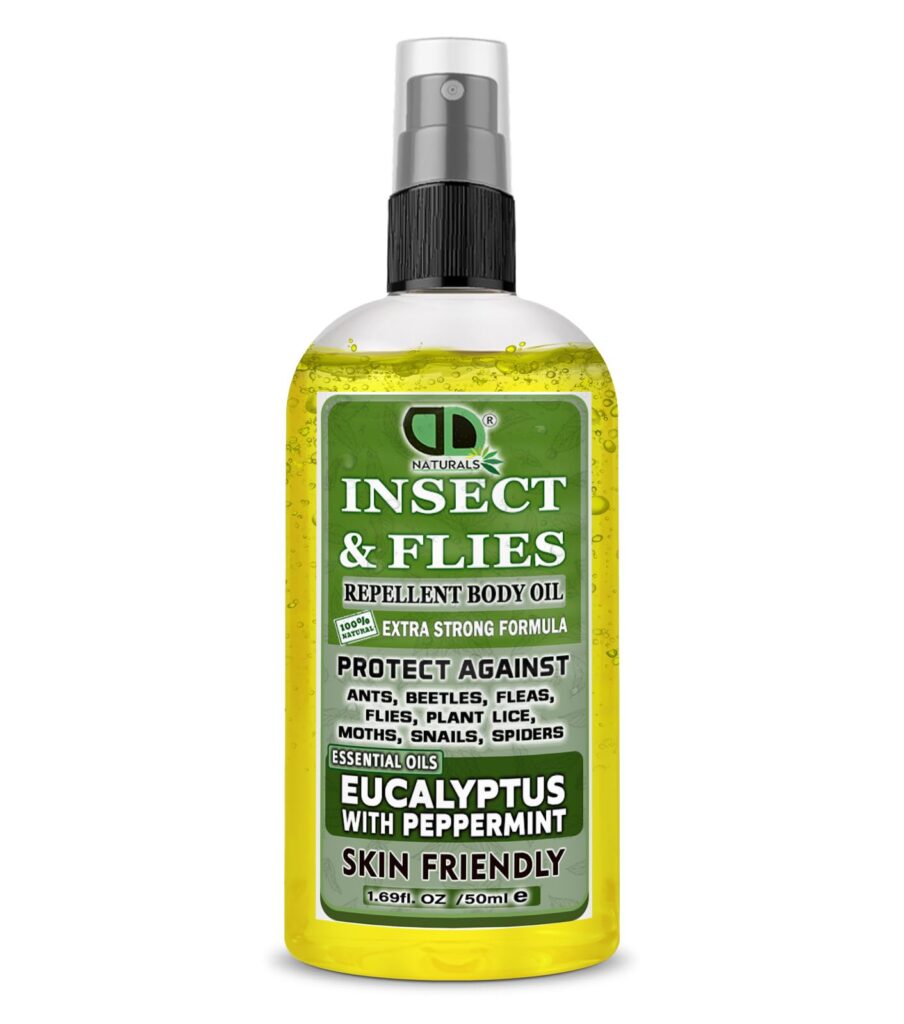
Essential oils can be a natural way to repel fruit flies:
• What You’ll Need: Essential oils like peppermint, eucalyptus, or lavender.
• Instructions: Mix a few drops of essential oil with water in a spray bottle, then spray it on counters and near trash cans.
• Why It Works: The strong scent repels fruit flies, discouraging them from lingering around your kitchen.
Preventing Fruit Flies: Best Practices
Getting rid of fruit flies is only half the battle; preventing them from returning is essential. Here are a few tips to keep fruit flies away:
• Store Produce Properly: Keep ripe fruits and vegetables in the refrigerator or covered to prevent attracting flies.
• Take Out the Trash Regularly: Dispose of food scraps and empty trash cans frequently, especially in warmer months.
• Clean Drains and Garbage Disposals: Use a vinegar and baking soda mix weekly to keep drains clear of residue where flies may breed.
• Wipe Down Surfaces: Clean counters daily and avoid leaving out open containers of sugary liquids, alcohol, or fruit juices.
FAQs About Fruit Flies
1. How long do fruit flies live?
Fruit flies typically live around 8-15 days but can reproduce rapidly, making infestations difficult to control without intervention.
2. Why are fruit flies so hard to get rid of?
Fruit flies reproduce quickly, laying up to 500 eggs at a time on damp, organic surfaces. Without eliminating breeding sites, they can keep returning.
3. Can fruit flies carry diseases?
While fruit flies don’t typically carry diseases harmful to humans, they can contaminate food with bacteria picked up from decaying material.
Final Thoughts
Fruit flies may be a common nuisance, but with these easy and effective methods, you can quickly tackle an infestation. From simple traps like apple cider vinegar to natural repellents like essential oils, there’s a solution for every situation. Remember, prevention is key: keeping your kitchen clean and free of food waste will go a long way in keeping fruit flies at bay.
By following these tips, you’ll be able to enjoy a fruit fly-free home and maintain a fresh, clean kitchen environment.







